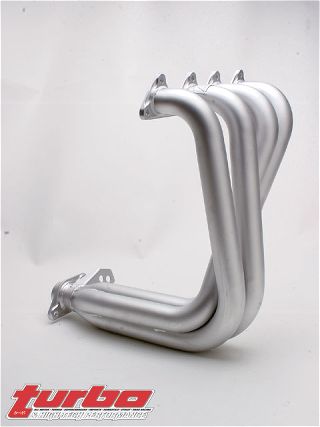 | Which Header Is Best For My Car? - Header Tech
| Which Header Is Best For My Car? - Header Tech Choosing the right header can be a difficult choice. Any experienced engine tuner will tell you there is no such thing as the one perfect header. Vehicles can be identical in make, year, and model but depending on what performance modifications that have been done, each vehicle will need a different type of header.
But before we get ahead of ourselves we should address the purpose of a header. In layman's terms the primary job of the header is to direct exhaust gases from the combustion chamber to the rest of the exhaust system. From a more technical standpoint, the primary job of the header is to aid in the extraction of the exhaust gases with the highest amount of velocity and lowest amount of backpressure possible. A good header design should reduce backpressure without sacrificing exhaust gas speed velocity.
The easiest way to decrease exhaust backpressure is to increase piping diameter. However, increasing the pipe diameter will decrease exhaust gas speed (velocity). Confused yet? Think of a water hose. Say you have a 1/2-inch water hose and you turn the faucet all the way up. The water velocity will be rather fast due to the small-diameter hose. If you remove the 1/2-inch hose and install one that is two inches in diameter and then turn the water back on full blast it will probably trickle out of the hose due to the reduced backpressure but the water volume is likely to be higher because of the larger diameter hose.
Now let's take it one step further. Gas speed (velocity) is dependent upon piping diameter and exhaust gas temperature. The hotter the exhaust gas gets the faster it travels. If the gas velocity gets too high the header system may become too restrictive, hurting top-end power. On the flip side, a too slow gas velocity will result in a very peaky powerband, hurting low-end torque. If the piping diameter is increased to reduce backpressure, the larger piping allows the exhaust gas expand and cool, resulting from the slowing down of exhaust gases (decreased velocity).
There are two types of 4-cylinder headers common in the aftermarket, a 4-2-1 design, also know as a Tri-Y header, and a 4-1 design. A 4-2-1 header joins two of the primary pipes into a secondary piping and then joins the two secondaries together at the collector. For a 4-cylinder engine with a firing order of 1-3-4-2 it is crucial to join the No. 1 and No. 4 cylinders and No. 2 and No. 3 cylinders together. The reason is since most 4-cylinder engines have a 180-degree crankshaft the exhaust pulse from the No. 1 cylinder helps to increase the exhaust flow of the No. 4 cylinder and vice versa (scavenging effect). The same goes for the No. 2 and No. 3 cylinders. For a well-designed header to work effectively it should merge the corresponding cylinders and have equal-length primaries.
To quench our own morbid fascination on how each header design would affect the powerband we borrowed four headers from DC Sports to test on our Project Integra. We tested a stock GS-R header, DC Sports' two-piece 4-2-1, one-piece 4-1, one-piece U.S. Type-R, and one-piece JDM Type R. To keep things on a level playing field we utilized a test pipe throughout the testing since the U.S. and JDM Type-R headers are both longer than the GS-R header. The JDM Type-R also utilizes a 2.5-inch collector so we had to accommodate for that as well.
For those not up to date on Project Integra the factory B18C engine has been tweaked with a Skunk2 exhaust, Skunk2 Stage 1 cams, Unorthodox Racing pulleys, Skunk2 Pro Series intake manifold, AEM cold-air, and a JDM Type R ECU. With the factory header installed the GS-R produces a peak of 165.7 horsepower and 109.2 lb-ft of torque to the wheels on Skunk2's SuperFlow chassis dyno.
